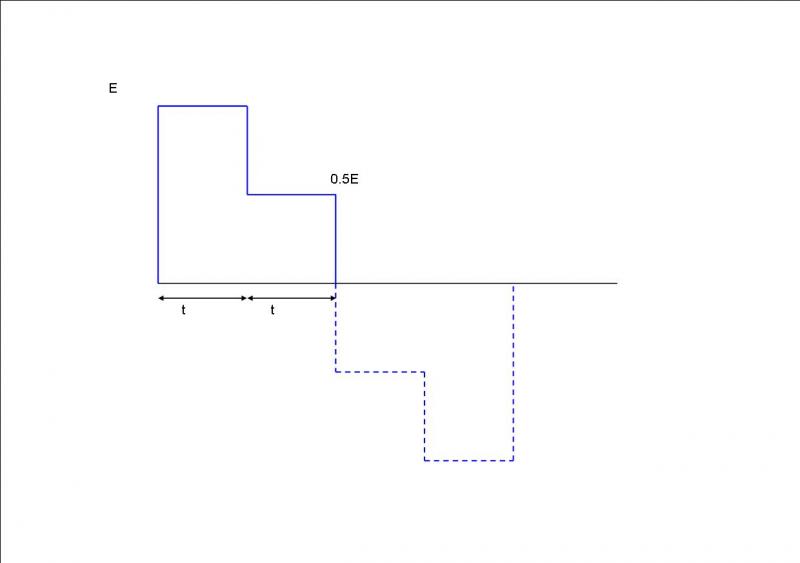Intuitively I would expect the average value (of a half cycle) to be equivalent to the d.c. value. I know it is not, but I don't know why.
Probably the simplest reason to understand "why" is to realise that power is proportional to voltage squared, not voltage - with a DC voltage of E across a resistance of R, the power dissipated in the resistance is E²R. Consider the following simple 'stepped' AC waveform, with a voltage E for half of each half cycle and 0.5E for the other half:
Considering just the first half-cycle, the average
voltage is obviously just the average of E and 0.5E, namely 0.75E.
During the first half of this half cycle, power is E²R. During the second half, it is (0.5E)²R, namely 0.25E²R. The average
power over that half cycle is therefore the average of E²R and 0.25E²R, namely 0.625E²R (and not 0.75E²R).
Does that help at all? The same genertal principle obvioulsy applies to a sine wave, but needs more complex maths to illustrate.
Kind Regards, John.
edit: typos corrected (a couple of 'R's omited from expressions), with aologies


